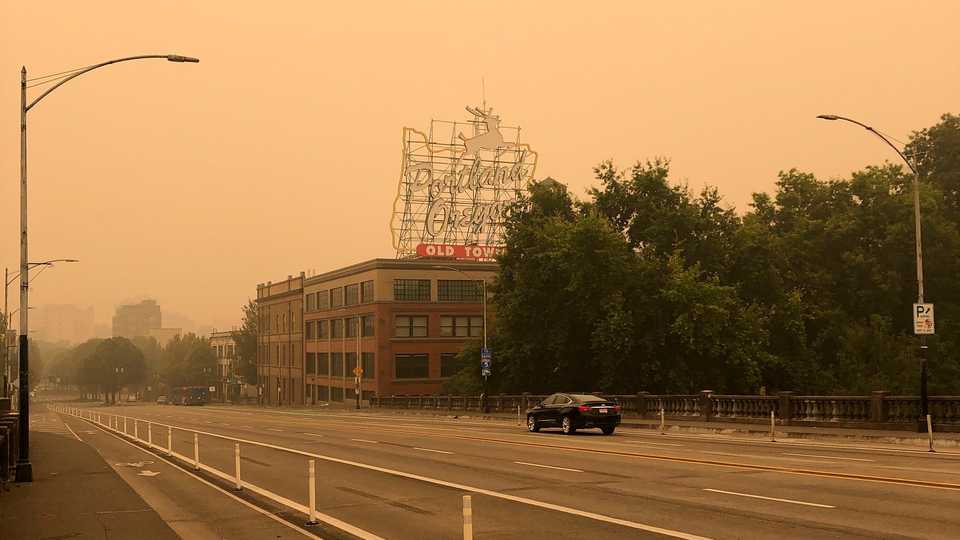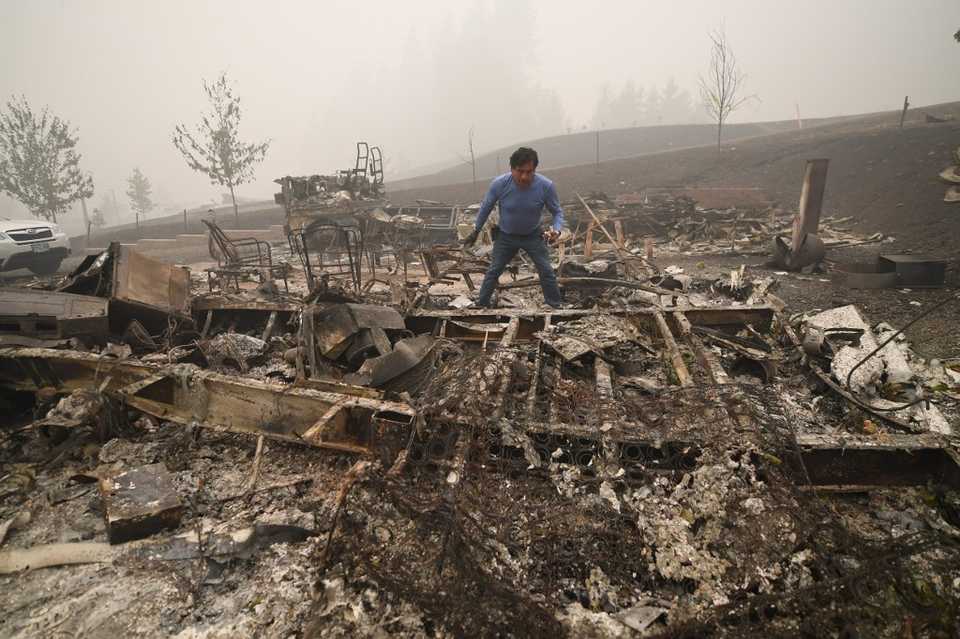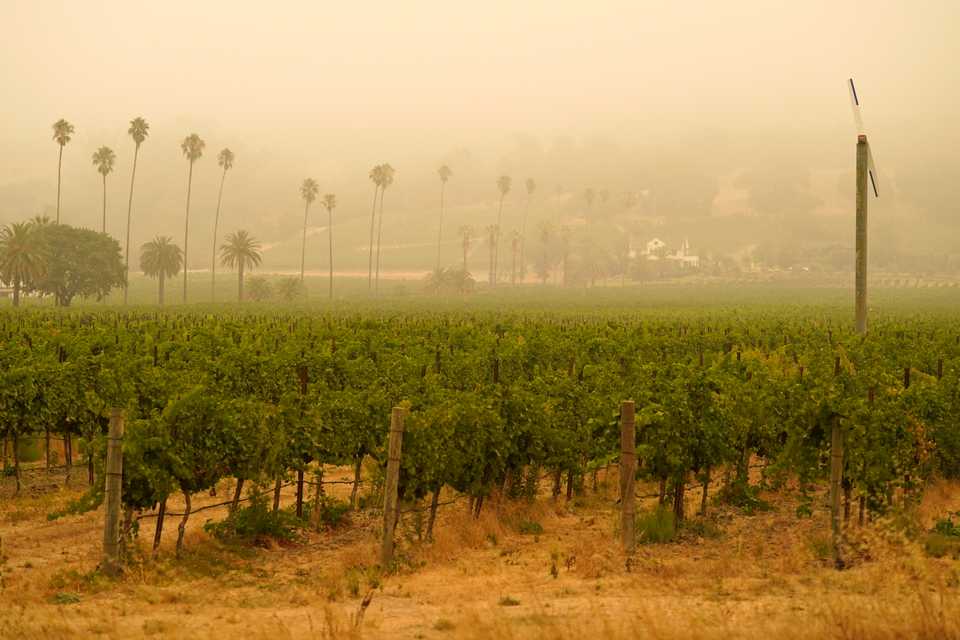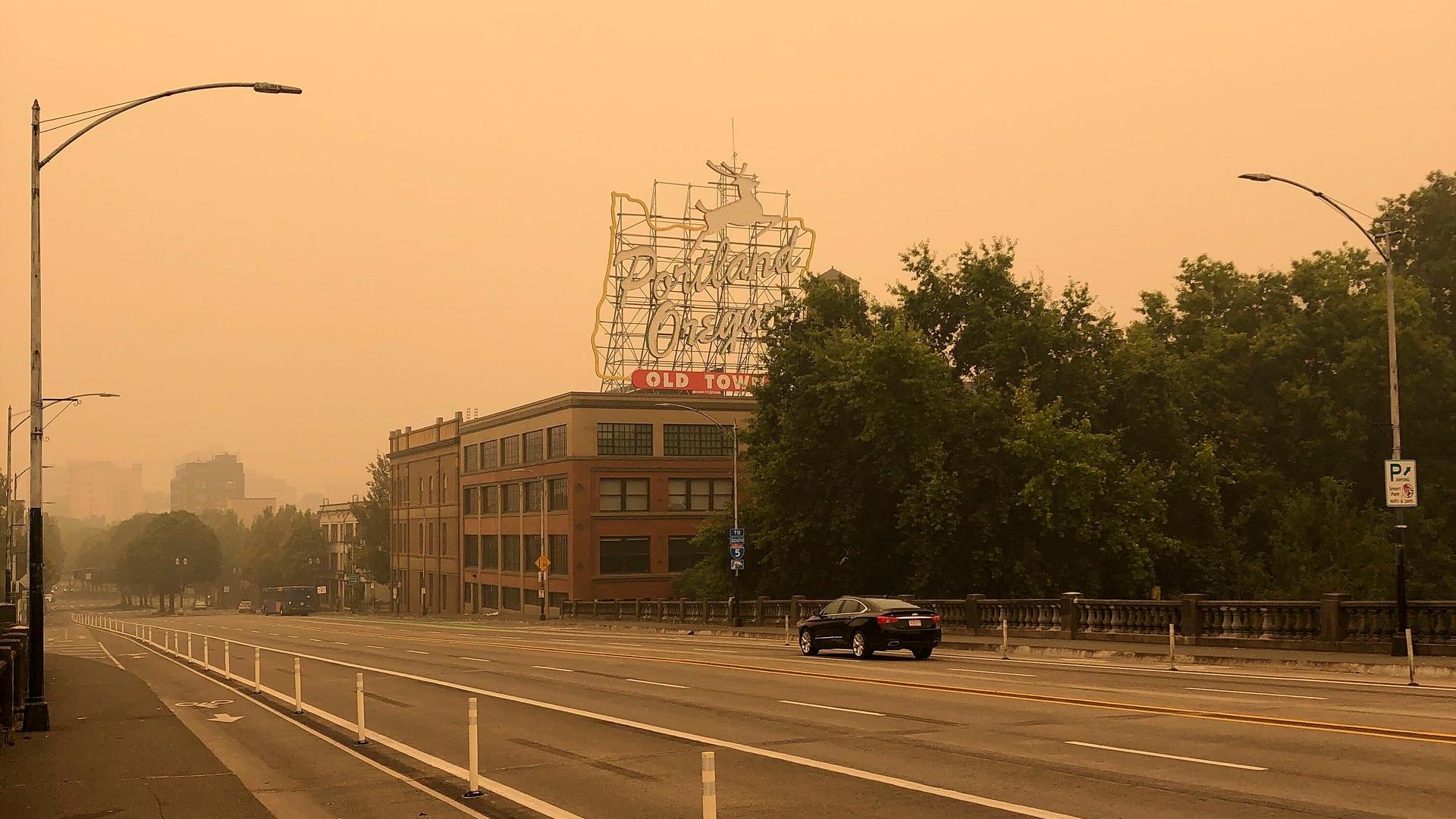
Wildfire smoke that posed a health hazard to millions has choked the West Coast as firefighters battled deadly blazes that obliterated some towns and displaced tens of thousands of people, the latest in a series of calamities this year.
For people already enduring the coronavirus pandemic, the resulting economic fallout and political tensions evident in the Black Lives Matter protests and far-right counter protests, the fires added a new layer of misery.
“What’s next? You have the protests, coronavirus pandemic, now the wildfires. What else can go wrong?” lamented Danielle Oliver, 40, of Happy Valley, southeast of Portland.
The death toll from the fires in California, Oregon and Washington stood at 28 and was expected to rise sharply. Most of the fatalities were in California and Oregon.
Oregon’s emergency management director said officials were preparing for a possible “mass fatality event” if many more bodies turn up in the ash. And the state fire marshal resigned after abruptly being placed on administrative leave. The state police superintendent said the crisis demanded an urgent response that required a leadership change.
Oliver has an autoimmune disorder that makes her vulnerable to wildfire smoke, so she agreed to evacuate. She was nervous about going to a shelter because of the virus, but sleeping in a car with her husband, 15-year-daughter, two dogs and a cat was not a viable option.
READ MORE: Dozens missing as firefighters battle two large Oregon fires
‘I’m tired of starting all over’
The temperature checks and social distancing at the American Red Cross shelter helped put her mind at ease. Now the family waits, hoping their house will survive. She has previously experienced homelessness.
“I’m tired. I’m tired of starting all over. Getting everything, working for everything, then losing everything,” she said.
Those who still had homes were not safe in them. A half-million Oregonians were under evacuation warnings or orders to leave. With air contamination levels at historic highs, people stuffed towels under door jambs to keep smoke out. Some even wore N95 masks in their own homes.
Some communities resembled the bombed-out cities of Europe after World War II, with buildings reduced to charred rubble piled atop blackened earth. Residents either managed to flee as the flames closed in, or perished.
Millicent Catarancuic’s body was found near a car on her 5-acre property in Berry Creek, California. The flames came so quickly she did not have time to get out.
On Tuesday, she packed several of her dogs and cats in the car but later called her daughter to say she decided to stay. Firefighters had made progress battling the blaze. The wind was calm. The flames still seemed far away. Then they rushed onto the property.
“I feel like, maybe when they passed, they had an army of cats and dogs with her to help her through it,” said her daughter, Holly Catarancuic.
Over 40,000 people evacuated
In Oregon alone, more than 40,000 people have been evacuated and about 500,000 are in different levels of evacuation zones, Governor Kate Brown said.
Fires along Oregon’s Cascade Range grew Saturday, but at a slower rate than earlier in the week, when strong easterly winds acted like a bellows, pushing two large fires — the Beachie Creek Fire and the Riverside Fire — toward each other and the state’s major population centres, including Portland’s southeastern suburbs.
Fire managers did get a spot of good news: Higher humidity slowed the flames considerably.
In California, a total of 28 active major fires have burned 4,375 square miles, and 16,000 firefighters are trying to suppress the flames, Cal Fire Assistant Deputy Director Daniel Berlant said. Large wildfires continued to burn in northeastern Washington state too.
In all, 19 people have died in California since wildfires began breaking out across the state in mid-August.
President Donald Trump will visit California on Monday for a briefing on the West Coast fires, the White House announced.
Democratic presidential candidate Joe Biden and the governors of California, Oregon and Washington state — all Democrats — have said the fires are a consequence of global warming.
“We absolutely must act now to avoid a future defined by an unending barrage of tragedies like the one American families are enduring across the West today,” Biden said.
READ MORE: California’s apocalyptic cityscapes are no Hollywood production
Poor air quality
The same smoke that painted California skies orange also helped crews corral the state’s deadliest blaze of the year by blocking the sun, reducing temperatures and raising humidity, officials said.
Smoke created cooler conditions in Oregon too, but it was also blamed for making the dirtiest air in at least 35 years in some places. The air quality index reading Saturday morning in Salem, the state capital, was 512.
The scale normally goes from zero to 500.
“Above 500 is literally off the charts,” said Laura Gleim, a spokesperson for the Oregon Department of Environmental Quality.
Because past air quality was never so poor, the government’s yardstick for measuring it capped out at 500, Gleim said. The department started monitoring in 1985.
The weather conditions that led up to the fires and fed the flames were likely a once-in-a-generation event, said Greg Jones, a professor and research climatologist at Linfield University in McMinnville, Oregon.
A large high-pressure area stretching from the desert Southwest to Alaska brought strong winds from the east toward the West Coast, reducing relative humidity to as low as 8% and bringing desert-like conditions, even to the coast, Jones said.
Instead of the offshore flows that the Pacific Northwest normally enjoys, the strong easterly winds pushed fires down the western slopes of the Cascade Range.
READ MORE: California sets record with fires burning 2M acres

Caused by climate change?
It isn’t clear if global warming caused the conditions, Jones said, but a warmer world can increase the likelihood of extreme events and contribute to their severity.
The smoke in Portland filled the air with an acrid metallic scent like dull pennies. It was so thick that Ashley Kreitzer could not see the road when she headed out to work as a ride-hailing driver.
“I couldn’t even see five feet ahead of me,” she said. “I was panicking, I didn’t even know if I wanted to go out.”
George Coble had no home to return to. He came with some of his employees Saturday to a wasteland of charred tree trunks just outside Mill City, Oregon. Coble lost everything: his fence-and-post business, five houses in a family compound and vintage cars, including a 1967 Mustang.
The family – three generations that lived in the compound — evacuated with seven people, three horses, five dogs and a cat.
“We’ll just keep working and keep your head up and thank God everybody got out,” Coble said. “There are other people that lost their family. Just be thankful for what you did get out with.”
READ MORE: Death toll from California wildfires rises, half a million evacuate

Political row
Unprecedented infernos have now destroyed an area roughly the size of New Jersey.
“The science is clear, and deadly signs like these are unmistakable, climate change poses an imminent, existential threat to our way of life,” said Biden, the Democratic nominee who will face President Trump at the polls on November 3.
“President Trump can try to deny that reality, but the facts are undeniable,” he said.
Worsening the sense of environmental catastrophe, all five of the world’s most air-polluted cities were on the West Coast on Saturday, according to IQAir, with dense smog and ash from the blazes coating the atmosphere from Los Angeles up to Vancouver in Canada.
In Portland, thick, choking smoke blanketed the downtown area Saturday morning.
“It is as if I had smoked 100 cigarettes. I’ve never seen this but we try to stay positive as conditions are getting better,” said a 37-year-old man who gave his name only as Jessie.
‘Dropped out of the sky’
More than 20,000 firefighters are battling the blazes, with officials warning that a respite provided by the arrival of cooler weather could end Monday with the return of warmer, drier weather.
Emergency official Andrew Phelps warned Oregon is “preparing for a mass fatality incident based on what we know and the number of structures that have been lost.”
In California, Butte County sheriff Kory Honea said additional officials had been brought in to check for human remains, but “right now, the areas that we need to search are too hot.”
Oregon has suffered another four deaths in the past 24 hours, bringing the West Coast region’s death toll this week alone to 19.
Among them was a 13-year-old boy found in a car with his dog in his lap in Oregon.
The road was so hot it had melted the tires as he tried to flee.
One 56-year-old woman told AFP she and her daughter don’t know if their ash-caked house in Aims, a short drive east of Portland, is still standing.
“To be honest, if we have to rebuild, we have to rebuild… I am just thankful that we’re alive,” she said.
“We saw a bird that was flying and then all sudden it just completely dropped out of the sky… if it’s killing God’s creatures, I don’t want to die too. So we left.”
Anatomical skeleton
California has already seen more than 3.2 million acres burn this year, an annual record, approximately the size of Connecticut, with nearly four months of fire season still to come.
Governor Newsom painted a grim picture of California as the canary in the climate change coal mine.
“This is a climate damn emergency,” he said in televised comments as he toured the damage in Butte County on Friday. “This is real, and it’s happening.
Huge wildfires are becoming more common, with the World Meteorological Organization saying the five years to 2019 were unprecedented for fires, especially in Europe and North America.
Climate change amplifies droughts which dry out regions, creating ideal conditions for wildfires to spread out of control and inflict huge material and environmental damage.
Nine people have been confirmed dead from a blaze in California’s northern Butte County, which was driven at unprecedented pace earlier in the week by strong, dry winds and soaring temperatures.
In a rare sliver of good news, a believed tenth victim from the blaze turned out to be a burned anatomical skeleton from a local classroom.
Two more people were killed near the rural community of Happy Camp this week, while eight more perished in California last month.
In Washington state, a one-year-old boy perished while his parents suffered severe burns as they attempted to flee an inferno 210 kilometres (130 miles) east of Seattle.










Discussion about this post